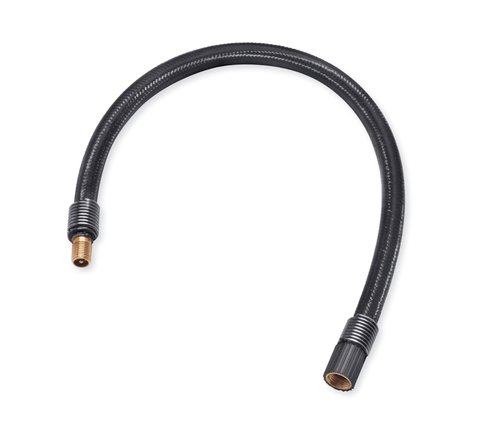When to Replace Your Motorcycle’s Tires
September 27, 2023 Comments CommentRiding on worn, damaged or old motorcycle tires can compromise the performance of your motorcycle and even your safety. Often motorcycle tires that appear to have plenty of miles left in the tread should really be replaced. Here are some things to look for to help you understand when to replace your motorcycle tires.
5 SIGNS IT’S TIME TO REPLACE MOTORCYCLE TIRES
1. Your Tires are Worn
Worn motorcycle tires provide reduced traction, can adversely affect stability and handling, and may be more easily damaged, leading to potential tire failure. It’s time to consider installing new tires when tread depth reaches 2/32 inch, and tires should be considered worn out and potentially unsafe when tread depth is 1/32 inch or less. Past this point, there is no guarantee that your tires will keep you safe or deliver grip and performance, particularly on wet surfaces. Most tires have wear bars molded into the grooves of the tire tread. There may be a small triangular indicator on the tire sidewall that points to the location of the wear bars.
Tires should be replaced before the tread wears down to the level of the wear bars. The traction of off-road tires will diminish as the tread wears, and the rear tire usually wears out at twice the rate of the front.
It can sometimes be challenging to see the wear bars. Harley-Davidson offers tire pressure gauges that feature a tool for measuring tire tread depth, available at your local authorized Harley-Davidson® dealer or online at H-D.com.
2. Your Tires Are Old
Many factors can affect tire lifespan including weather conditions, storage and usage conditions, load, speed, tire pressure, maintenance, and riding style. Even if older tires appear to be in good shape, the rubber compound can begin to dry out over time, and the internal construction can deteriorate. All riders should regularly spend some time inspecting their tires to pick up on any external signs of aging or wear, such as deformations or cracks in the tread, on the shoulders or sides.
The UV in the bright sun can prematurely age the tires if the bike is usually parked outdoors. Inspect your tire’s sidewalls for small cracks or discoloration that make the tire appear to be drying out.
The date-of-manufacture code on the sidewall of every motorcycle tire will indicate the age of the tire. The code is preceded by DOT (Department of Transportation), followed by a series of numbers. The last four digits are the date code – the first two numbers represent a week, and the second pair indicates a year. For example, a tire with a code of 3522 was manufactured in the 35th week of 2022. Checking this code is important if you are buying a used motorcycle to determine if the tires should be replaced. Dunlop and Michelin, the tire suppliers to Harley-Davidson, recommend that after five years or more of use, tires should be examined every year by a professional mechanic, and replaced 10 years after the date of manufacture, even if they have not reached the legal wear out limit.
The UV in the bright sun can prematurely age the tires if the bike is usually parked outdoors. Inspect your tire’s sidewalls for small cracks or discoloration that make the tire appear to be drying out.
3. The Tire is Damaged
Rough pavement, potholes and impacting blunt objects can seriously damage tires. Any tear, cut or deformation in a tire should be carefully examined by a professional mechanic. Consider the repair of a punctured tire with a plug a temporary “get home” procedure. A repaired tire loses its speed rating and should be replaced. Harley-Davidson recommends that when riding on a repaired tire, speed should not exceed 50 mph for the first 24 hours after repair, and the repaired tire should never be used over 80 mph.
4. THERE’S CUPPING OR UNEVEN WEAR OF THE TREAD ON THE TIRE
Tread that is worn unevenly can affect handling and cause uncomfortable vibration. It may also be an indication of another problem, such as an unbalanced wheel, a bent or mis-aligned axle, a damaged wheel rim, a bad wheel bearing or riding with incorrect tire pressure. A professional technician can often diagnose other problems by looking at uneven tread wear.
5. You Have the Wrong Tires on Your Motorcycle
Motorcycle manufacturers carefully select tires for each model, and those tires are often integral to the performance of the motorcycle. Harley-Davidson only recommends the use of its specified tires in the original size, speed rating, load rating, and construction as the Original Equipment tires.
Where Can I Buy New Motorcycle Tires?
Genuine Harley-Davidson®/Dunlop® and Harley-Davidson®/Michelin® tires are only available through an authorized Harley-Davidson® dealer or in our online inventory of motorcycle tires. The Harley-Davidson Service Information Portal offers a detailed Tire Chart Matrix which can be used to identify the Original Equipment tire size and part number for Harley-Davidson® motorcycles 1980-Current.
A selection of Original Equipment quality tires, tire pressure gauges and tire maintenance accessories are available at your local Harley-Davidson® dealer or online at H-D.com.
Want to learn more about motorcycle tires? Check out our article explaining the ins and outs of motorcycle tires.





